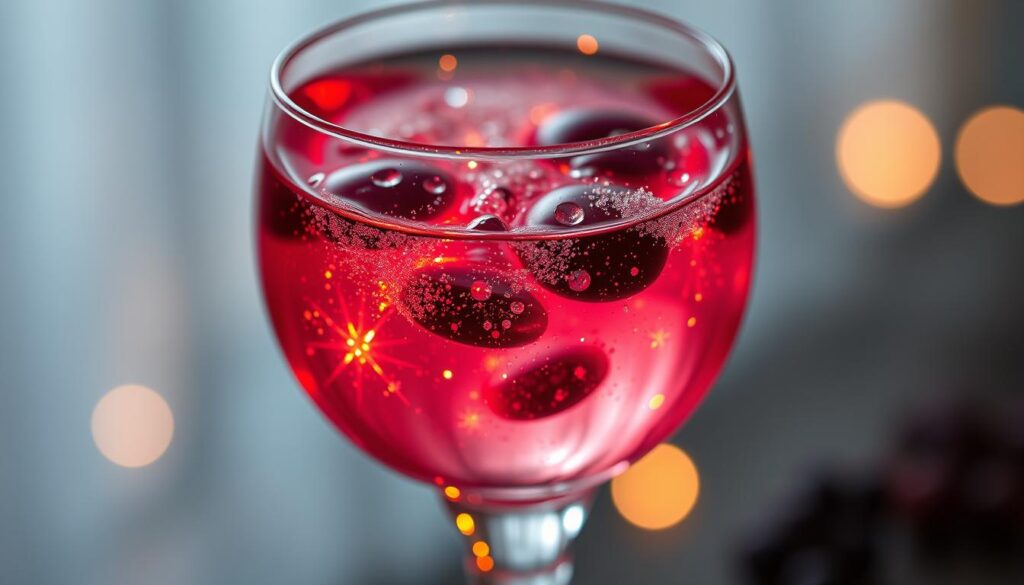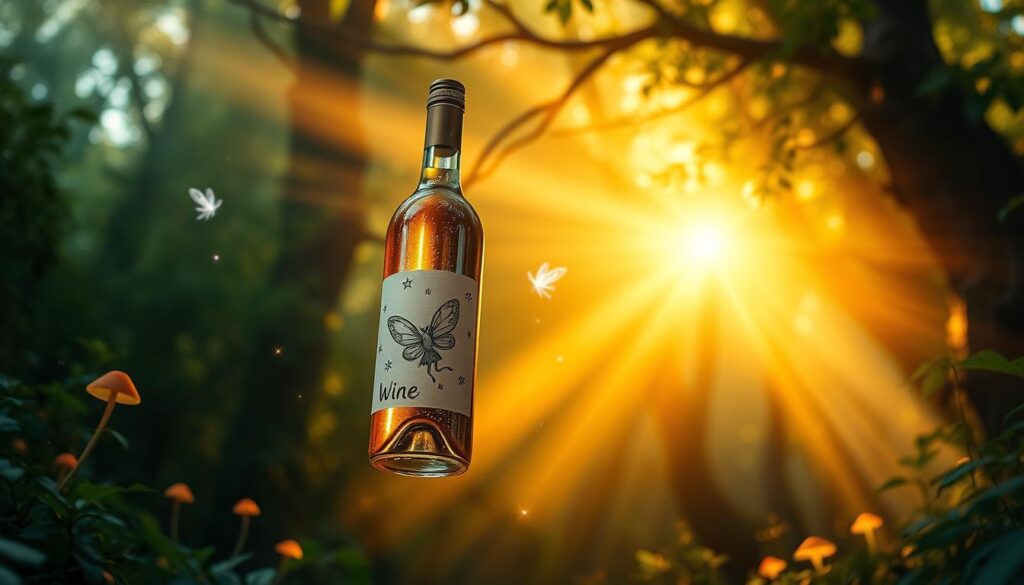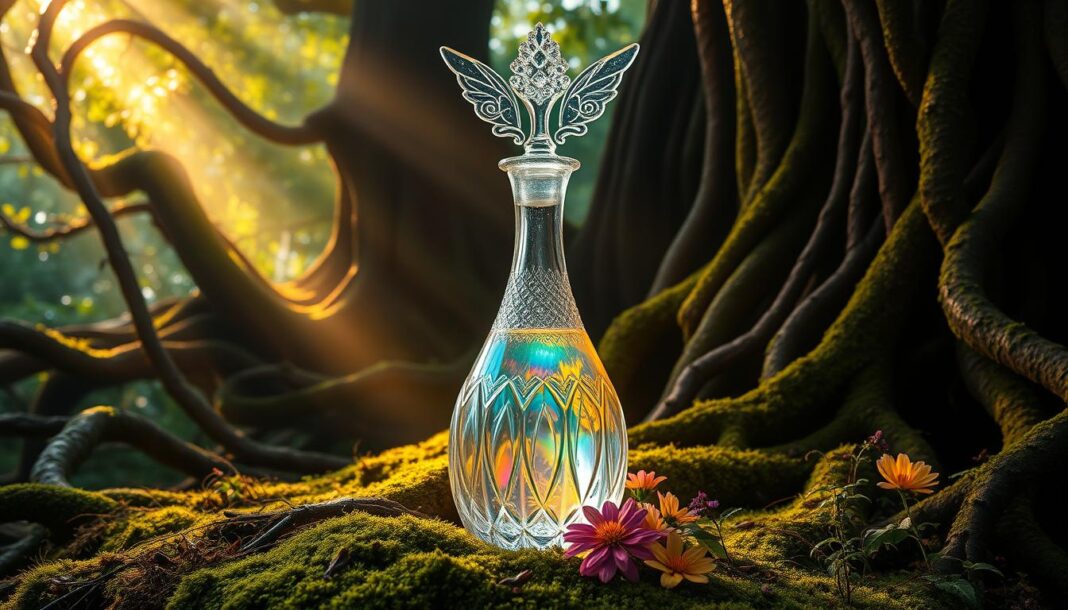We invite you to explore the enchanting world of a beverage that has captivated imaginations across fantasy literature and modern culinary interpretations. This mythical drink, often associated with magic and wonder, has a rich history that spans centuries.
As we delve into the historical origins of this beverage in folklore and fantasy writings, we trace its evolution from mythical tales to contemporary recreations. The distinctive sensory characteristics that define this drink include a unique flavor profile that is both captivating and intriguing.
Our comprehensive guide will not only explore the history and taste of this beverage but also provide a detailed recipe for creating a non-alcoholic version at home, along with suggested food pairings to enhance the overall experience.
Key Takeaways
- Discover the historical origins of fairy wine in folklore and fantasy literature.
- Learn about the unique flavor profile and sensory characteristics of this mythical beverage.
- Find a simple recipe to create a non-alcoholic version of fairy wine at home.
- Explore ideal food pairings to complement the distinctive taste of fairy wine.
- Understand how to balance historical context with practical culinary guidance.
What is Fairy Wine?
Delving into the realm of fantasy, fairy wine emerges as a fascinating drink with roots in rich literary traditions. As we explore this enchanting beverage, we find that its depiction varies across different fantasy contexts.

Origins in Fantasy Literature
Fairy wine has its roots deeply embedded in fantasy literature, where it is often portrayed as a potent and enchanting drink. Classic fantasy works have significantly shaped our understanding of fairy beverages and their supposed effects on mortals.
Modern Interpretations
In contemporary fantasy series like “The Folk of the Air,” fairy wine has seen a resurgence in popularity, renewing interest in fairy cuisine and beverages. Modern food artisans and mixologists have attempted to translate these literary descriptions into tangible culinary experiences, bridging the gap between fantasy and practical gastronomy.
As we examine the concept of fairy wine, it becomes clear that it serves both as a literary device and a source of inspiration for real-world culinary creations. This blend of fantasy and reality allows us to explore new flavors and culinary possibilities.
The Distinctive Taste of Fairy Wine
Delving into the world of fairy wine reveals a distinctive taste that captivates the senses. Fairy wine is often imagined as a beverage that balances sweetness with complexity, offering a rich and enchanting flavor profile.
Flavor Profile
The flavor profile of fairy wine is typically characterized by notes of honey, floral elements, and fruits, accompanied by mysterious undertones that add to its allure. This unique combination sets fairy wine apart from conventional wines, providing a taste experience that is both familiar and exotic.
We can break down the flavor components into several key elements:
- Honey and floral notes that contribute to its sweetness
- Fruity undertones that add depth and complexity
- Mysterious or magical undertones that evoke a sense of wonder
Sensory Experience
The sensory experience of fairy wine is multifaceted, involving not just taste but also aroma and mouthfeel. The aromatic components of fairy wine play a significant role in its allure, with scents that enhance the overall tasting experience. When savoring fairy wine, the balance of these elements creates a harmonious and engaging sensory experience.
To better understand the sensory profile of fairy wine, let’s examine its characteristics in a comparative format:
| Characteristic | Fairy Wine | Conventional Wine |
|---|---|---|
| Primary Flavor Notes | Honey, Floral, Fruits | Fruits, Oak, Spices |
| Aromatic Components | Floral, Honey, Mysterious Undertones | Fruity, Oak, Floral |
| Mouthfeel | Smooth, Complex | Varies by type |

The serving temperature and method can significantly affect the tasting experience of fairy wine. We recommend serving fairy wine at a slightly chilled temperature to preserve its delicate flavors and aromas. The choice of glassware can also enhance the experience, with glasses that concentrate the aromas being particularly suitable.
How to Make Fairy Wine at Home
Embark on a culinary adventure by making fairy wine at home, a process that’s both fun and rewarding. Creating this enchanting beverage involves a few simple steps and ingredients, which we will guide you through in detail.
Essential Ingredients
To start, you’ll need the following ingredients: 2 oz of pear juice, 2 oz of freshly brewed honey vanilla chamomile tea, 0.5 oz of honey lavender simple syrup, 0.5 oz of freshly squeezed lemon juice, sparkling grape juice, and a sugar rim for garnish. The honey lavender simple syrup is a crucial component, made by combining 8 oz of water, 7 oz of sugar, 2 oz of honey, and 2 oz (volume) of lavender buds in a saucepan.
To prepare the syrup, bring the water to a low simmer, then add the lavender buds and cook for 20 minutes. Afterward, fold in the sugar and honey until they are fully dissolved. Allow the mixture to cool before straining it to remove the lavender buds.
Step-by-Step Recipe
To assemble the fairy wine, start by rimming a glass with sugar. Then, combine the pear juice, honey vanilla chamomile tea, honey lavender simple syrup, and freshly squeezed lemon juice in a shaker filled with ice. Shake vigorously to combine and chill the ingredients.
Strain the mixture into the prepared glass and top it off with a dash of sparkling grape juice. The result is a refreshing, flavorful drink that captures the essence of fairy wine.
Tips for Success: Ensure that you use high-quality ingredients and follow the recipe closely to achieve the best flavor. If you encounter any issues, such as the syrup not dissolving properly, refer to our troubleshooting tips for common problems.
Perfect Pairing Suggestions
To fully appreciate fairy wine, it’s crucial to understand its pairing possibilities. We explore the ideal food pairings that complement the distinctive flavor profile of fairy wine, enhancing both the beverage and accompanying dishes.
For a delightful experience, consider pairing fairy wine with light appetizers that work well with its delicate flavors. Some ethereal finger foods that complement fairy wine include fruit and cheese skewers or mini caprese salads. A simple recipe for lavender shortbread cookies can also add a lovely touch to your fairy wine gathering.
When it comes to desserts, the sweet and complex notes of fairy wine can be harmonized with a variety of sweet treats. Options like lemon lavender creme brûlée or rose petal jelly tarts offer balanced combinations that won’t overwhelm the palate. The key is to balance the flavors so that neither the wine nor the dessert overpowers the other.
Seasonal pairing variations are also worth considering, as the availability of ingredients changes throughout the year. For instance, during spring, a fairy wine paired with fresh berries and cream can be particularly refreshing. In contrast, autumn might call for pairing it with warm spices and apple-based desserts.
Creating a complete fairy-themed menu for special occasions can elevate your entertaining experience. With fairy wine as the centerpiece beverage, you can curate a menu that complements its unique characteristics. This might include dishes like herb-infused salads, delicate finger sandwiches, and an assortment of artisanal cheeses.
For those looking to entertain with fairy wine, our guidance includes serving suggestions and presentation ideas that enhance the overall experience. Using elegant glassware and garnishing with edible flowers can add to the enchanting ambiance of your gathering.


